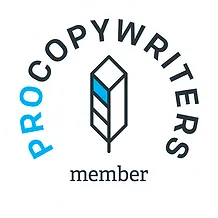Freelance copywriters love long copy.
But we would, wouldn’t we?
In terms of work, we like projects we can sink our teeth into. Excuses to get creative, to go deeper, and to be clever. Long copy lets a copywriter show off. We also like to read them, because we’re the type of people that read. We’re interested in advertising, and how a writer can hold attention beyond a strapline.
But what about customers and prospects, the people that really matter? Have time-short consumers really got time to read all that copy?
In this Swiped post, I’ve chosen a long copy example that’s uniquely aware of the debate. It doesn’t expect anything from its audience.
But it persuades prospects effectively, whether they go long or short.
Who’s Going To Read All That Copy?
Back in 1963, David Ogilvy (the most boring but appropriate example in the world) wrote Confessions of an Advertising Man. In it, he sung the praises of long copy and the impressive results it had delivered. He explained that every ad should be a “complete sales pitch” and, quoting somebody who is not half as well known, said “the more you tell, the more you sell.”
That was 1963. He said it again in 1983. Now it’s 2013.
Since Ogilvy touted the benefits of long copy, things have changed. We’re all exposed to more advertising, of a higher quality, than ever before. We also have better things to do – smartphones to check, an entire internet full of junk to read, and endless channels to switch.
So, today, in 2013, who is going to read all that copy?
The answer is “some people.” I can’t be any more accurate than that.
Copywriting experts still love long copy. If it was losing them business, they wouldn’t feel that way. Check out this video from Drayton Bird, talking about those long format online landing pages and why they work.
So we can be certain that some people are reading long copy. Some aren’t.
That’s why you need copywriting that works for both.
Press Ad Copywriting That Puts You Off Reading

(If you want to read the advert in full, you can click here. You should. It’s a good one.)
Scanned in to the best of my ability, this press advert for the Skoda Citigo by Fallon London was featured in The Guardian a few days ago.
As you can see, it features a self-contained, concise angle: There are lots of reasons to buy this car, but here are three really big ones you’re going to love.
Meanwhile, the “little reasons” are covered in the long copy part of the ad. This is all written in a grey font, at a smaller than average size, and lacks the bold, striking colours of the main proposition.
In fact, the mass of grey text is more like a background pattern than anything else. It’s there to illustrate the argument, and make sure your eye is drawn to the exciting green segment. That’s where the key benefits are sold.
The Skoda Citigo press ad does nothing to make you read the long copy. You could even argue that the design and font choices actively put you off reading it.
But you should. It’s wonderful.
Quality for the Inquisitive
If people do decide to dig deeper into the Skoda ad and read the rest of the copy, they’re suitably rewarded.
Here’s just one section, to give you an idea of how it reads:
“We’ve been making cars for ages. 108 years to be exact. In fact, we’re the 3rd oldest car manufacturer in the world. So we know our cars. Especially our Citigos. It may be the smallest car in our range but it keeps winning really big awards, like being named Car of the Year by Auto Express in 2012, and ‘City Car of the Year’ in 2013.”
It’s friendly. It’s crisp. It’s precise. It’s engaging.
It makes you want to keep reading.
At the same time, it’s doing its job. It’s not waffle that belongs in the background of an advert, but quality copywriting that covers key motivations for buying a Citigo. It overcomes objections (the car is a bit small), and includes expert testimony (big awards).
What I like most about this advert is that even the copy that’s not central, that’s not going to be read by everyone, is really really good.
That’s essential.
Effective Copywriting is Pervasive
There’s no piece of copy that’s an island. Everything is connected to everything else.
When you run a TV spot or write a new website, you’re feeding into a brand. People tend to come to those brands from all angles, seeing a piece of marketing here and there, or hearing the name around the place.
Because we never know how prospects reach our copy and what other parts of the brand are already rattling around their brains, it’s absolutely vital to be consistent. It’s no good writing one excellent blog post, or coming up with a genius strapline.
The best copy is always at its best.
You might have a really good homepage. You’ve perfected the copy. But what about your terms and conditions? What about the transactional emails and letters you send out? What about the placeholder text on your contact forms?
The Skoda Citigo ad is a great reminder that quality is everything and, if your brand is going to come across strong, must be everywhere.
